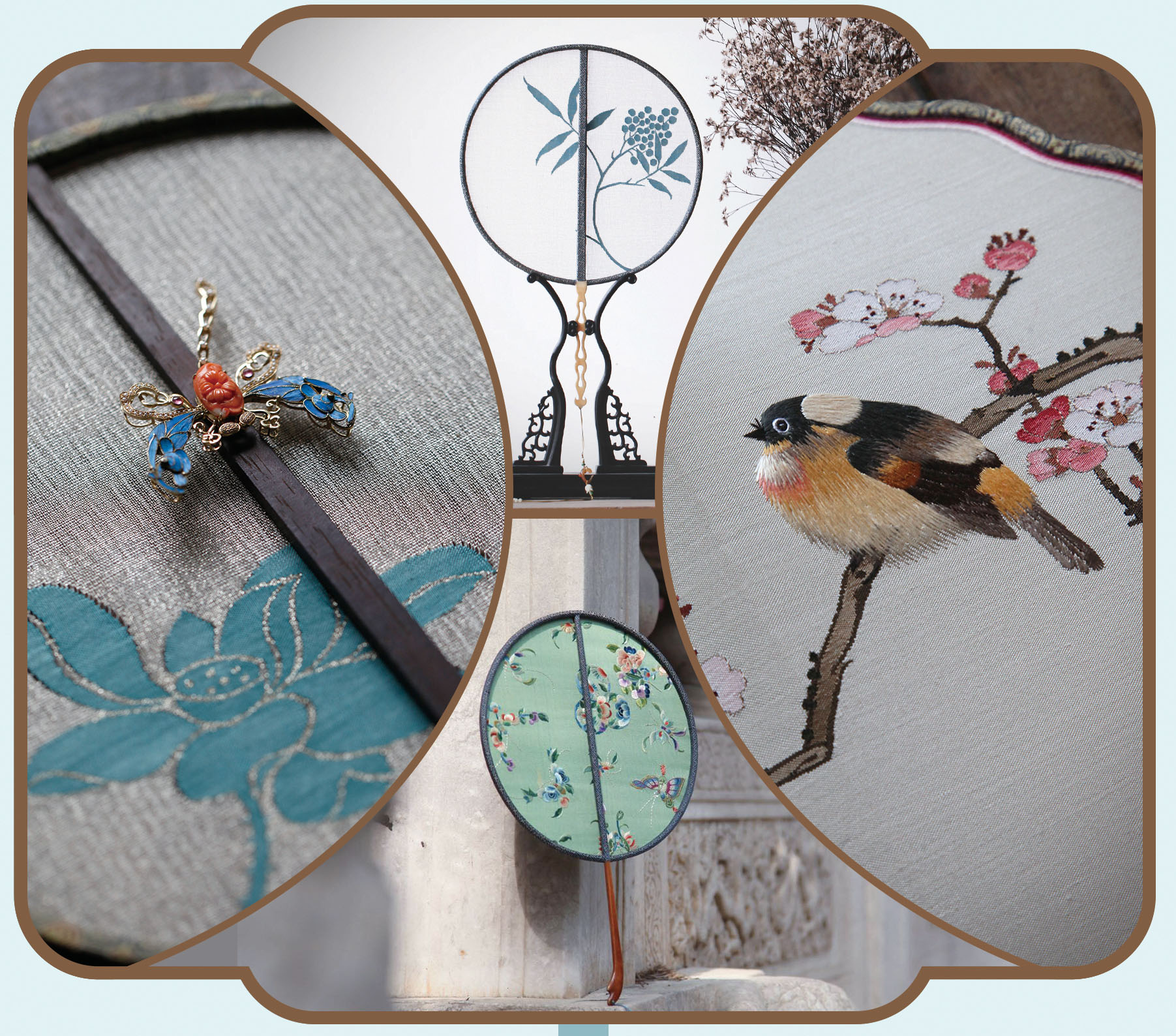Li Jing merges ancient fan-making techniques with modern design, bringing traditional Chinese craftsmanship into the present.

In the bustling city of Suzhou, Jiangsu province, Li Jing, 38, has carved out a peaceful yet profound space — his studio, Shixianju (meaning "dwelling in leisure"), where he dedicates himself to his lifelong passion: handcrafting traditional Chinese round fans.
Blending centuries-old techniques with modern aesthetics, Li's creations have captivated a wide audience, garnering more than 2.72 million followers on China's social media platform Weibo. His work has also appeared in fashion shoots and TV dramas.
Li's interest in round fans began in high school when he fell in love with Peking Opera.
"The costumes, poetic lyrics, and symbolic props all reflect the artistry of this comprehensive art form," he said. "Everyone who appreciates Peking Opera can find a unique perspective, and I was particularly fascinated by the exquisite stage accessories, which sparked my desire to collect and restore fans."
READ MORE: Fanning the love of Chinese art
According to Li, a round fan embodies a fusion of ancient craftsmanship, integrating techniques for crafting the frame, designing patterns, making ribs and tassels, and mounting the fan surface.
"Despite its small size, the round fan holds boundless creative possibilities," he explained. "The surface can be made from materials such as silk, damask, or brocade, and decorated with calligraphy, painting, or embroidery."
Among all techniques, Li's favorite is kesi, or silk tapestry weaving, which is also the most intricate. Known for its meticulous craftsmanship, kesi involves weaving each colorful thread individually to form detailed patterns, often creating lifelike imagery with a shimmering, layered effect. The painstaking process can take weeks or even months to complete a single piece.
To further explore the art, Li moved in 2009 from his hometown of Jiaxing in Zhejiang province to Suzhou, a city renowned for its flourishing handicraft industry. What began as a hobby — collecting and restoring vintage fans — soon became a central part of his life as he started designing fans himself.
Li's design philosophy is simple: instead of pursuing complexity, he focuses on returning to the essence of the craft, achieving a balance between intricacy and elegance.
"Some artisans force incompatible styles together, resulting in gaudy pieces," Li said.
To avoid this, Li dedicates himself to mastering every technique, ensuring his fans — whether adorned with delicate plum blossoms or minimalist ink landscapes — exude a sense of refined sophistication.
Li's ability to draw inspiration from everyday moments is key to his creative process. "Beauty often reveals itself unexpectedly," he said. "I enjoy finding ideas in the small details of daily life."
One of his most memorable experiences came during a television interview. A creased sheet of tracing paper cast shadows that reminded him of a hanging plum branch.
This fleeting moment of inspiration led to one of his signature creations — a fan celebrated for its poetic simplicity and later featured in a photo shoot with actress Liu Yifei.
Beyond tradition
Although many admire his design philosophy, with some even calling him an artist, Li humbly insists that he is simply an artisan.
"Artists express their emotions through their works, while I simply aim to recreate Chinese aesthetics and bring joy to my audience," he explained.
For Li, it's not essential for people to fully understand the history behind each piece. It's enough if his work provides them with an opportunity to "pause and appreciate beauty".
"Each fan reflects the spirit of craftsmanship, heritage, and the quiet joy of creation," Li said.
In recent years, Li has embraced new horizons by integrating Western elements into his designs, creating a universal language of art.
ALSO READ: Reviving dough art with precision and passion
"As China engages more deeply with global cultures, Chinese aesthetics also resonate abroad," he noted. "For example, a traditional round fan's silk surface can pair beautifully with sleek metal accents."
Despite widespread admiration, Li refuses to commercialize his work, choosing to focus on small-batch creations. In an era dominated by mass production and livestream sales, he remains steadfast in his principles.
"My designs require rare materials and weeks of labor. They'll never be 'bestsellers', but I'm satisfied pursuing authenticity and artistry," he said. "Every day, I sketch designs while watching TV — simple as that, and it makes me really happy."
This lifestyle reflects the essence of his studio's name, Shixianju, inspired by a book by Ming Dynasty (1368-1644) scholar Gao Lian. Through it, Li finds harmony between art and life.
"For me, making round fans isn't a job or business — it's the heartbeat of my existence," he said.


